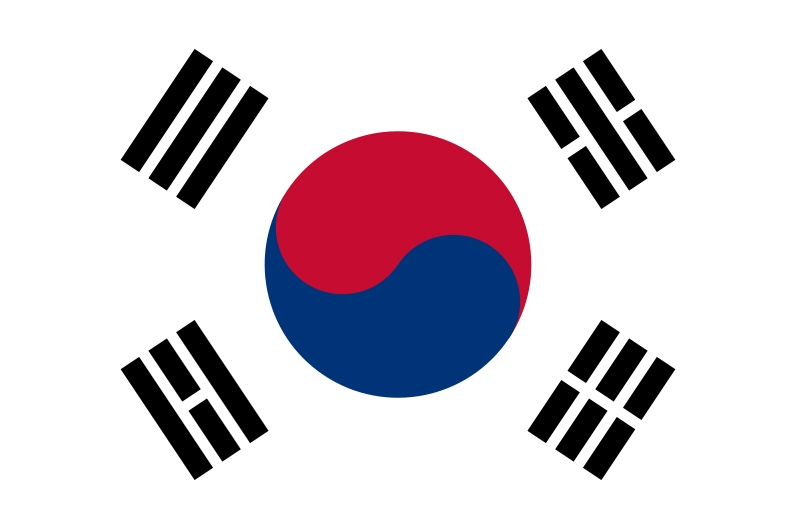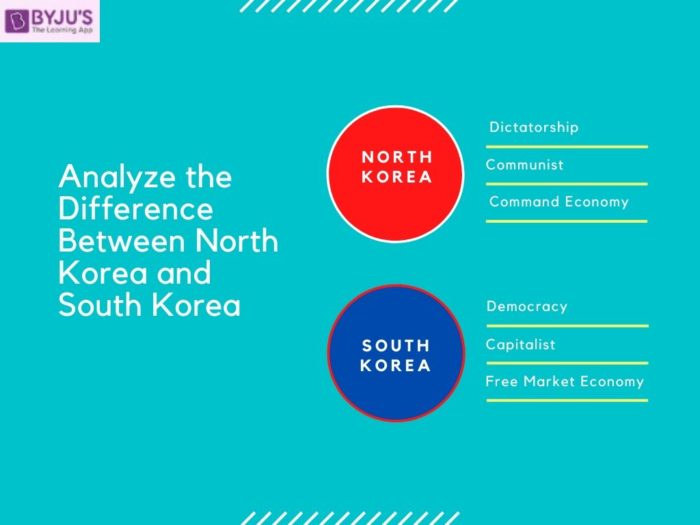On the eastern edge of Asia lies the Korean Peninsula, a land steeped in history, culture, and resilience. Divided along the 38th parallel, the peninsula is home to two distinct nations: the Democratic People’s Republic of Korea (DPRK), commonly known as North Korea, and the Republic of Korea (ROK), commonly known as South Korea. These two nations, while sharing a common heritage, have embarked on vastly different paths, shaping their unique identities and perspectives on the world stage.
Delving into the Historical Roots of Division
The division of Korea can be traced back to the end of World War II in 1945. With the surrender of Japan, which had colonized Korea for nearly four decades, the peninsula found itself divided into two occupation zones: the northern half under Soviet control and the southern half under American control.

The failure to reach a unified agreement for Korean governance led to the establishment of two separate governments in 1948: the DPRK in the north and the ROK in the south. The DPRK, under the leadership of Kim Il-sung, adopted a communist ideology, while the ROK, under the leadership of Syngman Rhee, embraced a capitalist system.
Contrasting Political Systems and Ideologies
The DPRK, officially a socialist republic, adheres to the Juche ideology, a philosophy emphasizing self-reliance and national sovereignty. The country is governed by a one-party state, with the Workers’ Party of Korea holding a dominant position.

In contrast, the ROK, officially a democratic republic, embraces a multi-party system and a market economy. The country has undergone significant political transformations since its establishment, transitioning from authoritarian rule to a more democratic system in the late 1980s.

Economic Divergence and Standards of Living
The economic trajectories of the two Koreas have diverged sharply. The DPRK’s centrally planned economy, coupled with its isolationist policies, has led to economic stagnation and widespread poverty. The ROK, on the other hand, has experienced rapid economic growth, becoming one of the world’s leading exporters of electronics and automobiles.
This economic disparity is reflected in the standards of living of the two populations. The ROK boasts a high-income economy, with access to modern infrastructure, education, and healthcare. The DPRK, on the other hand, faces chronic food shortages, limited access to basic necessities, and a constrained healthcare system.
Cultural and Social Dynamics
Despite their shared heritage, the cultural and social landscapes of the two Koreas have evolved in distinct ways. The DPRK promotes a culture of self-reliance and national pride, emphasizing conformity and collective identity. South Korean society, influenced by Western values and globalization, embraces individual expression and a more diverse cultural landscape.

Prospects for Reconciliation and Reunification
The division of Korea has had a profound impact on the lives of its people, creating a chasm of political, economic, and social differences. The pursuit of reunification remains a complex and sensitive issue, with both governments holding differing perspectives on the process and timeline.
Despite the challenges, there have been sporadic efforts to foster dialogue and cooperation between the two Koreas. Inter-Korean summits have taken place, and there have been limited exchanges in sports and cultural activities. However, significant hurdles remain, including the DPRK’s nuclear weapons program and the entrenched political and economic disparities.
Conclusion: A Tale of Two Koreas
The story of Korea is a tale of two nations, bound by a shared history yet separated by political, economic, and social realities. The division of the peninsula has had a profound impact on the lives of its people, shaping their unique identities and perspectives. While the prospects for reunification remain uncertain, the pursuit of peace and reconciliation continues to hold a glimmer of hope for the future of Korea.